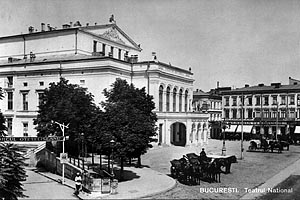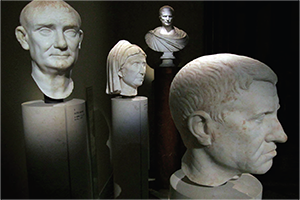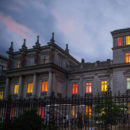
A five stars history
Five stars – one per century, as we’re talking about a place with five hundred years of urban history.
Entering the Continental Hotel, we are transported nearly 130 years back in time. The moment we enter the building, our heads bow in awe, but also under the pressure of the low ceilings of every !oor’s hallways – they have never been altered since the building was erected around the start of the twentieth century, a clear hint to the lower average height of people back then. The rooms bring to life the “fty years between 1880 and 1930; and it’s not just the atmosphere. On the other side of any room’s windows, in the streets, there actually are “ve hundred years of history, begging to be acknowledged.
During the middle ages, the area hosting the Continental Hotel today was outside the city limits, mostly populated by modest little houses until the days of Constanting Brâncoveanu: in 1699, a blacksmith by the name of Stan Taie- Cuie (Cut-Nails) had his home on today’s Novotel Hotel’s location, while across the road from him, where Palatul Telefoanelor (the Telephone Palace) lies, Stroie Seimeanul used to live, a mercenary in the princely troops.
Just one generation later, in 1750, we already have boyar domains here: equerry Barbu Mănescu’s residence was in the Telephone Palace area, and Petre Merișescu’s in Continental Hotel’s place. Nearby, on the future grounds of the Grand Theatre, metropolitan bishop Filaret the Second raised, during the eighteenth century, an orphanage that stood until the 1838 earthquake.
At the start of the nineteenth century, the whole area was owned by Prince Dimitrie Ghica, who allotted and sold it around the middle of the century. The first hotel on the premises was built in 1840 by Belgian Donat Hugues, and in 1856, on the place occupied by the Continental today, Hotel de Paris was in existence, modernized 4 years later and renamed as Grand Hotel Broft. We have, therefore, the first version of today’s Continental Hotel: a two story building (owned by the Elias bankers until its demolishing in 1884) by the name of Grand Hotel Broft, amongst whose guests have included Prince Napoléon (nicknamed “Plon-Plon”), Emperor Napoleon III’s cousin, but also prisoner Osman Pasha, in 1878.
Across the road from Grand Hotel Broft we have the Grand Theatre (later to become The National Theatre), constructed between 1847 and 1852 and inaugurated December 31st, 1852 by Prince Dimitrie Știrbey. Damaged by the bombings that took place in the spring of 1944, it was torn down the following summer. The city’s rhythm changes pace after 1880: Podul Mogoșoaiei (Mogoșoaia’s Bridge) becomes Calea Victoriei (Victory Avenue) and Grand Hotel Broft gives place to the Continental Hotel, built between 1885 and 1886, following the designs of architects Emil Rittern Forester and I. I. Rosnovanu. Casa Török (Török House) was just to the right from the hotel, across the street, hosting the famous Fialkovsky coffeehouse and, afterwards, the Elysée Restaurant, for 40 years on end.
Grand Theatre Square was also where the editorial office of newspaper L’indepéndance Roumaine was located, to be then replaced by the first Lumiére cinema in Bucharest – a project by French national André Forése. This is where, on the 8th of June 1897, the Bucharest public first viewed new films. Another premiere took place one year later, in 1898, when the first feature was shown in the main hall of the National Theatre, and in 1908 the first open-air screenings (a few comedy sketches) were hosted by Casa Török’s rooftop, Continental Hotel’s patrons being able to watch from their windows.
To the left of the Continental Hotel there used to be the Oteteleșanu hotel and its beer garden. In the latter’s place the Telephone Palace was erected at the start of the 1930s, a project by American architects Louis S. Weeks and Walter Roy and Romanian architect of Dutch descent Edmond van Saanen Algi.









